Photo Gallery and Blog 2014
Screech Owls

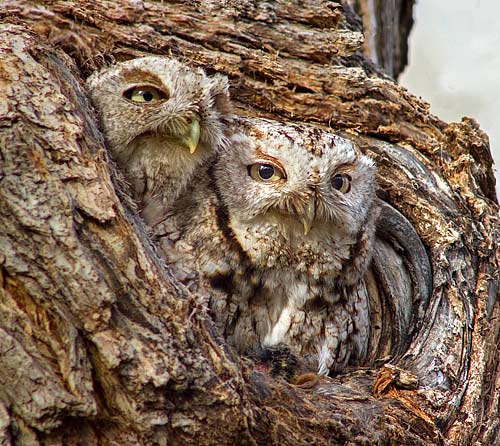
I was glad to see a screech owl was back in the tree hole again this year.
The hole is right beside a city bike trail so it is easy to go check it out.
These owls are certainly tolerant of human activity.
There is a lot of traffic on that bike trail—dog walkers, joggers, bicycles, even a 5K race.
Most of the time, the owl ignores it all and sits there fast asleep, filling the hole and looking like so much tree bark.
But if you wait long enough, something might happen.
One time the other adult owl was in the back of the hole and poked its head out,
first out one side then out the other, which naturally woke up the first owl.
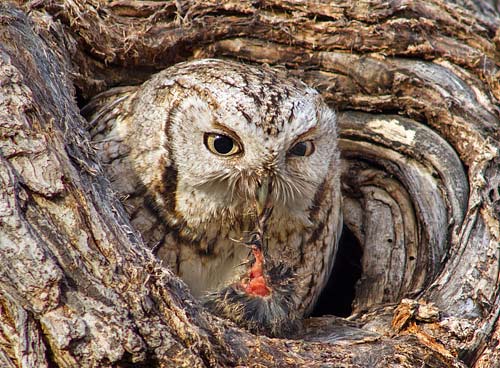
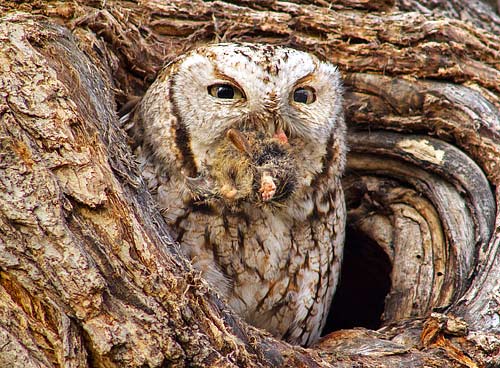
Another morning the owl woke up, pulled out a dead mouse from somewhere in the back of its hole and proceeded to eat it.
The foot was the last bit to go down.
It reminded me of the B. Kliban poem: "Love to eat them mousies, Mousies what I love to eat. Bite they little heads off, Nibble on they tiny feet."
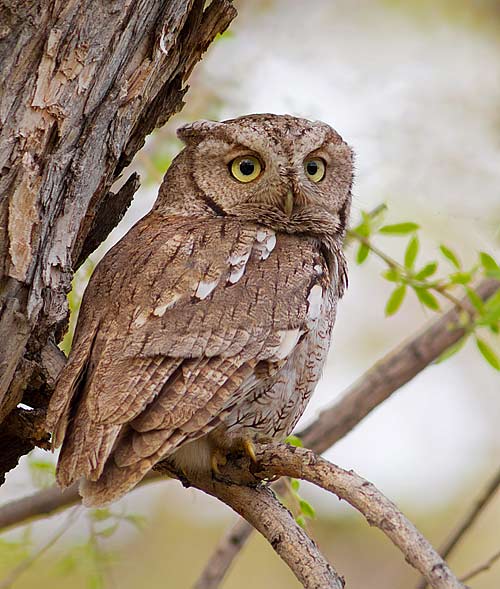
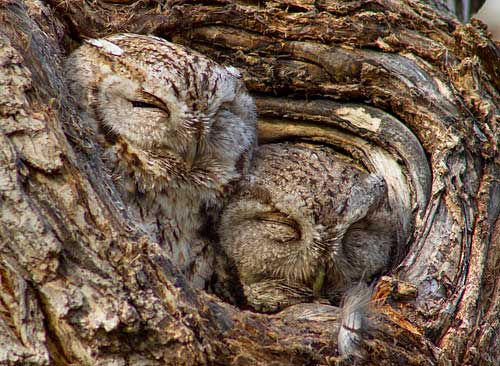
On yet another day, I passed an hour chatting with the occasional pedestrian while the owl snoozed.
Then it woke up and flew out to a nearby branch.
It looked up, down, and all around, then looked at me as if to say "I'm ready for my closeup."
Then it flew back to the hole and back to sleep.
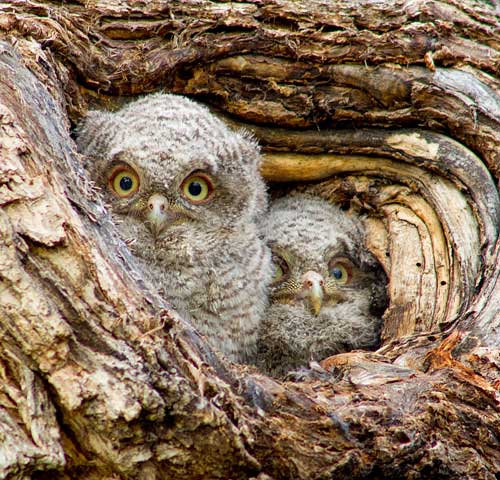
A few weeks later, there were some fuzzy baby owls peering from the hole.
Before long, mother owl flew back to the nest hole, pushed the owlets back,
and assumed her position snoozing at the entrance to her hole.
(If you're thinking I must be really close to these owls to get these photos, well, that's not exactly true.
The hole is 30 feet up in the tree and I was a fair distance back to avoid too much angle.
I used my very big and very old Canon 800mm FD lens with an EOS adapter.
On my 7D camera it is like a 1280mm lens because of the crop factor.
I said 'very old' because it is Canon's obsolete manual focus lens from the mid 1980's.
It is quite awkward to use compared to modern auto-focus, image-stabilized lenses
but it still takes a good photo if you can hold it perfectly still.)
Avocets
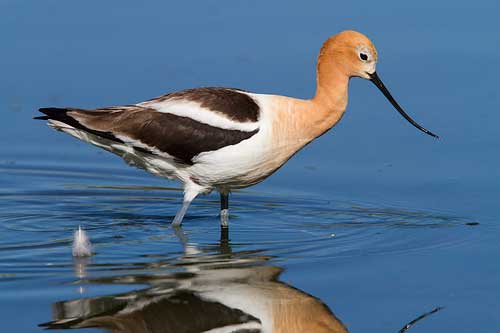
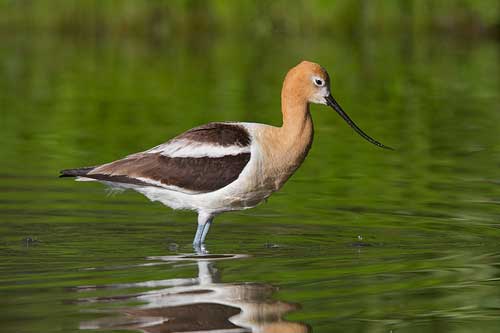
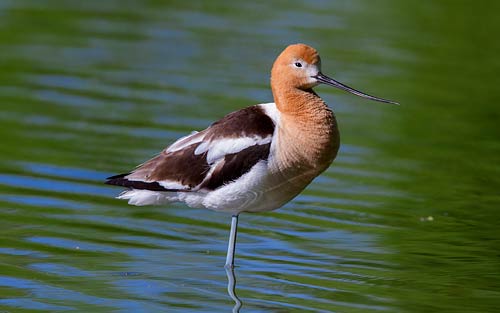
Avocets are these elegant shorebirds with upcurved bills and long blue legs.
The avocet chicks appear in early June.
There was one chick in this area (but not close enough for a photo) and its parent vigorously defended its space.
Anytime another bird got close, the avocet would attack with fluttering wings and squawking.
It even attacked a mallard hen with her own brood of ducklings.
Mostly the avocet was busy feeding which means randomly wading around and repeatedly plunging its head into the water,
which is really tough to photograph.
Once again I said thank goodness for autofocus.
After a while it stopped and stood on one leg to relax.
A week later...
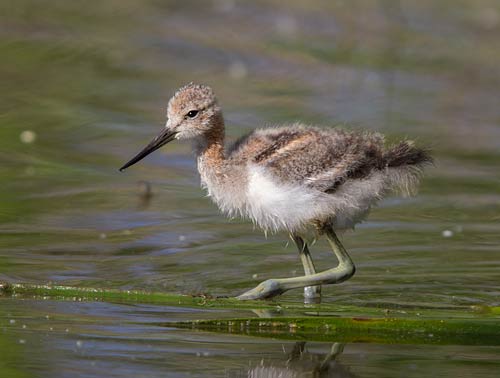
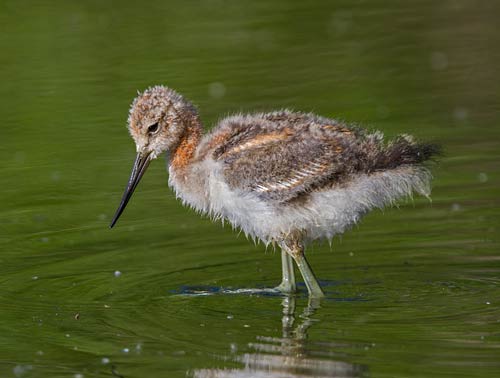
A week later I woke up at 5am and couldn't sleep, so I might as well drive to Lakewood and look for avocets again.
Makes sense. It was a fortuitous bit of insomnia.
There was one avocet chick actively feeding along the shoreline in a curved cove of the pond.
I knelt down in a promising muddy spot with good light and waited for the wildlife to come to me.
It worked. Ten minutes later, the chick had worked its way around the shoreline and right towards me.
Pretty soon I was fumbling around to remove the 1.4X converter because it was so close.
Great Blue Herons
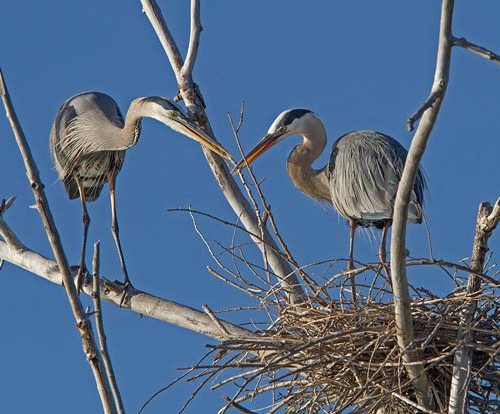
At the same open space pond, this pair of great blue herons was busy building a nest atop a tall, dead tree.
One heron would fly across the pond, land in a tree, break off a stick, fly back to the nest, and
pass it to the other heron.
Other than that, they just stood there, hanging onto the tree branch with their weird-looking feet.
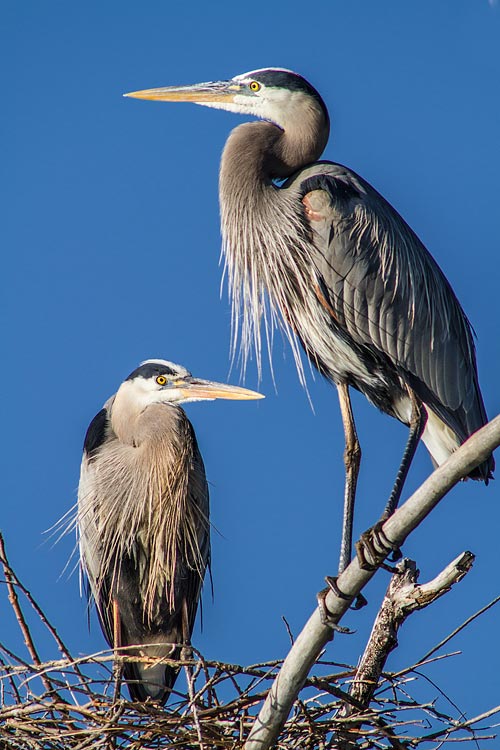
Backyard Berry Fest
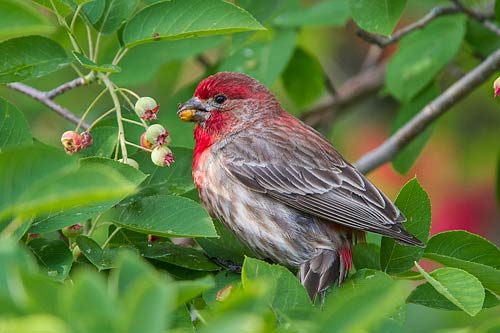

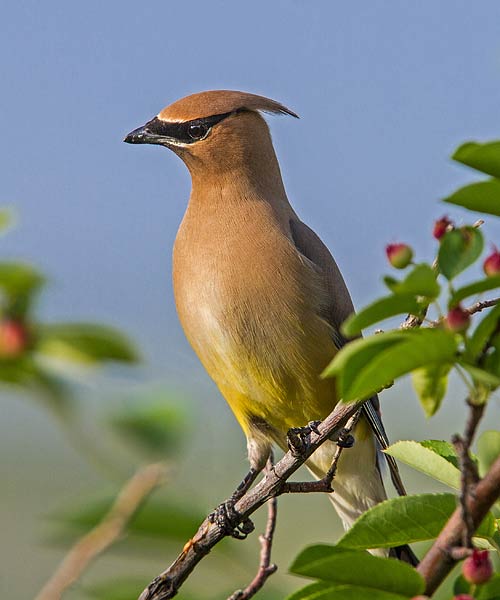
There is a serviceberry tree in my backyard.
In mid June the berries ripen and the tree becomes a bird magnet.
I regularly saw clumps of leaves shaking as birds actively chowed down on the berries.
The primary customers were robins with an occasional house finch.
But one time I looked out and saw a cedar waxwing.
I was surprised since I had never seen one before and here was one right in my own tree.
Naturally I had to try to get a photo.
It was so simple to just sit there on my deck with the camera and watch the birds come and go.
Evening light diffused by some clouds was very pleasant.
It was fairly easy to get some robin photos and a few finch photos in the tree.
But the prize was the waxwing.
Only one time it landed in a good spot for a good photo but one time was enough.
Pygmy Nuthatch
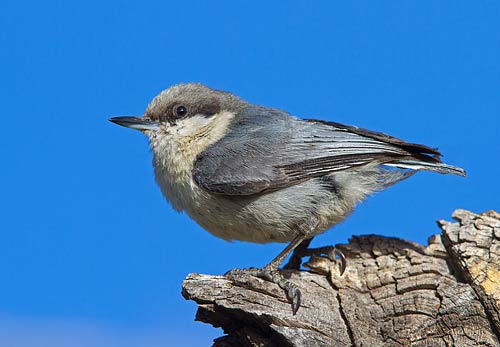
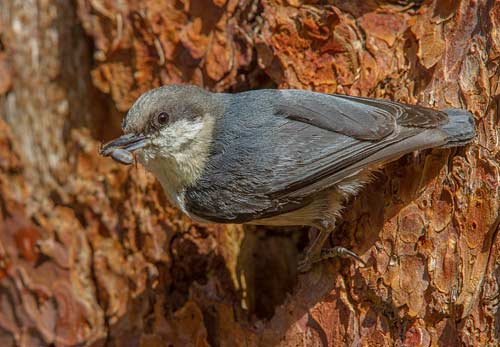
I found this pygmy nuthatch in RMNP, actively feeding chicks in its nest in a hole in a dead ponderosa pine tree.
This pygmy nuthatch did not seem to walk down branches headfirst like its white-breasted cousins.
But oh man is it fast.
It flew to this short branch, into the hole, back to the branch, and off it went, and didn't wait around to pose for photos.
It really ought to cut down on caffeine.
Grosbeak
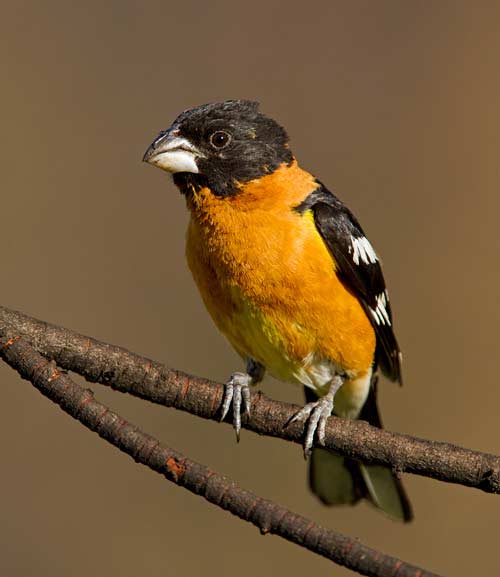
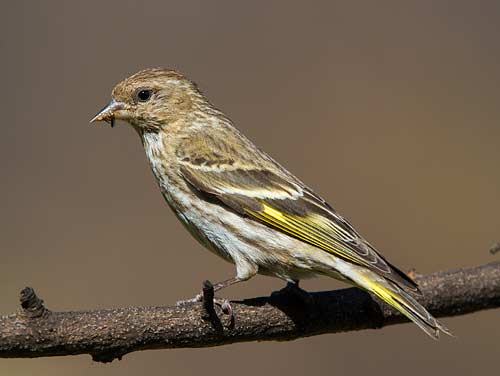
My buddy who lives in the foothills has lots of birds around his house,
including this black-headed grosbeak and pine siskin.
Red-Naped Sapsuckers
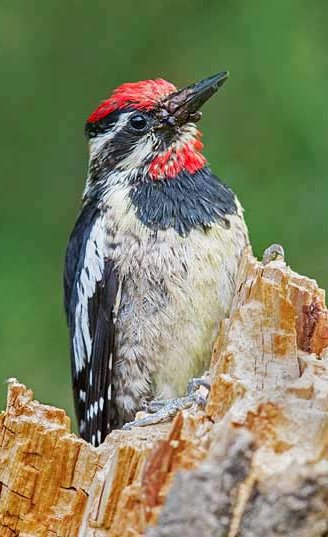
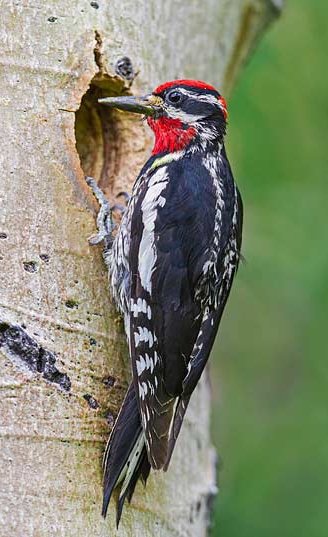
In late June the sapsuckers were busy nesting in Rocky Mtn Natl Park.
A week after the fireworks were over, this pair was still feeding their growing chicks.
Early in the feeding period, the adults go into the hole to feed the chicks.
Later they stay out on the side of the tree and just throw in the food.
These chicks seemed especially ungrateful as one would reach out and peck the adult in its face when it arrived with more food.
The female (on the left) has a white chin and no nape patch.
The male (on the right) has a red throat and red nape patch.
Golden-Mantled Ground Squirrels
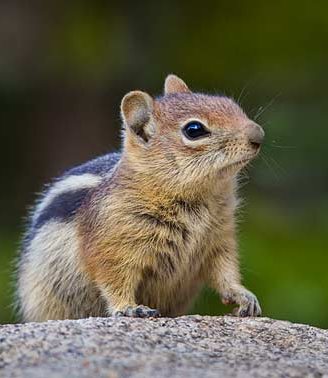
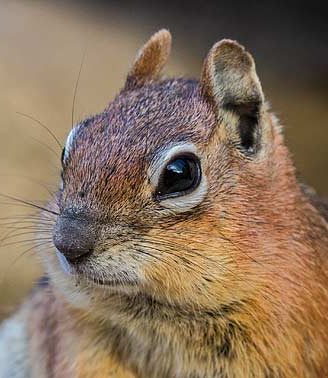
Ground squirrels are always fun to see.
Even when they are tolerant, getting a good photo is still a bit tricky when they are constantly running around.
Once in a while they stop for a fraction of a second and pose.
Great Blue Heron Snack
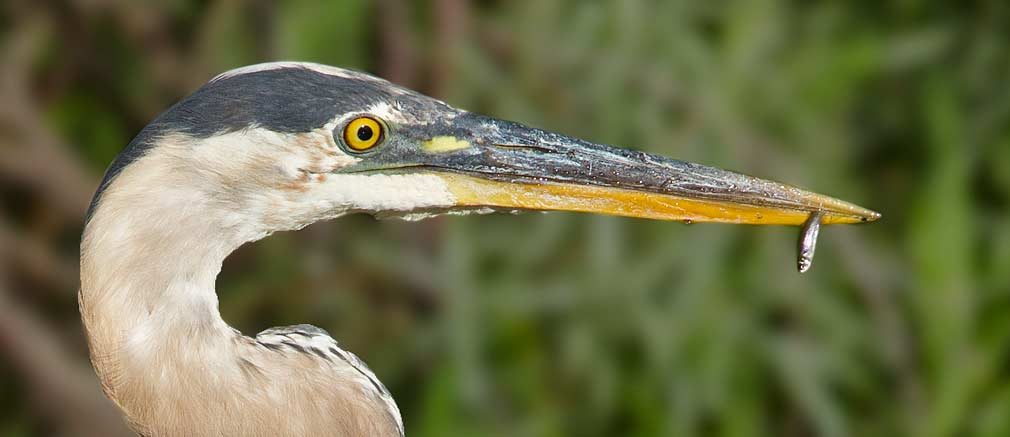
C'mon, just throw it back.
Snowshoe Hare
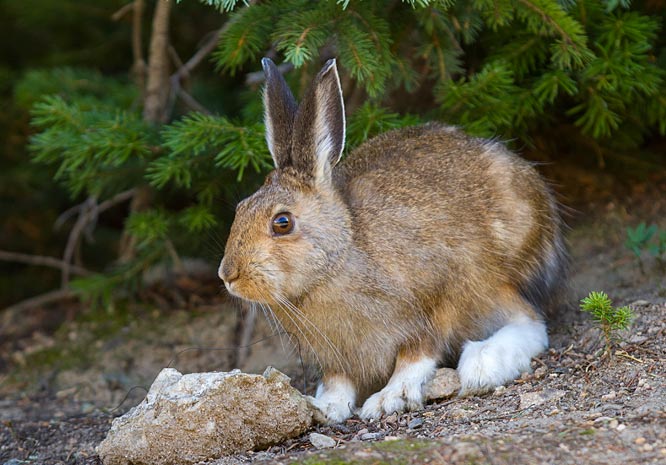
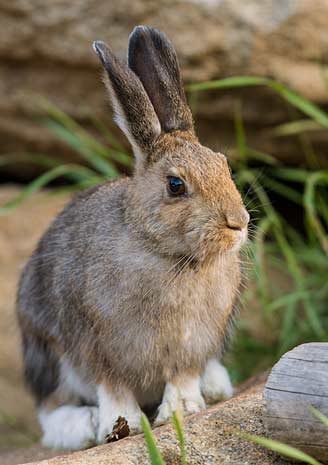
One evening in late August I stopped at a picnic area to eat my picnic dinner.
After my first bite, I looked around and noticed this snowshoe hare eating its evening dinner too.
Its feet had already turned white as its annual change to its white winter coat progresses.
Fall can't be too far away.
Coyote
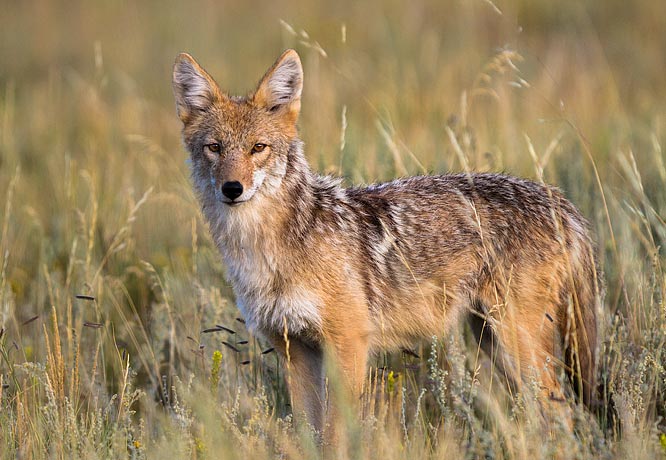
This wily fellow was out at dusk, searching through the tall grass for an evening meal.
No roadrunners around here.
Bull Elk
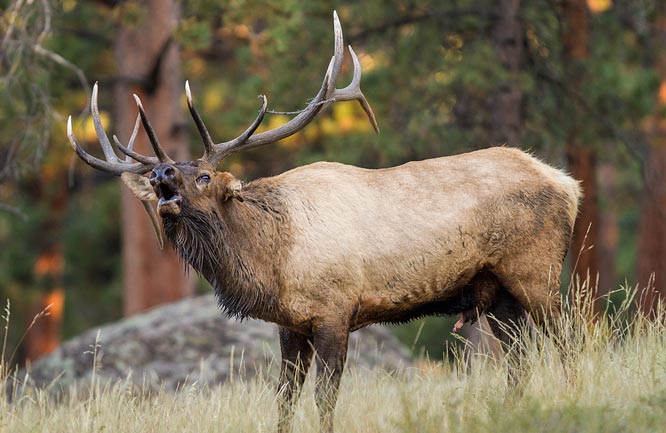
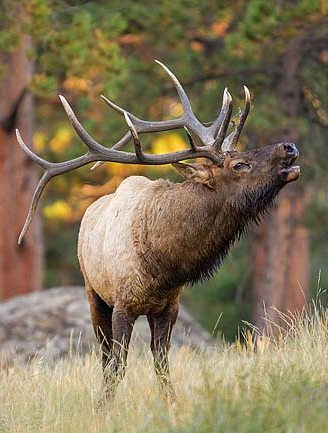
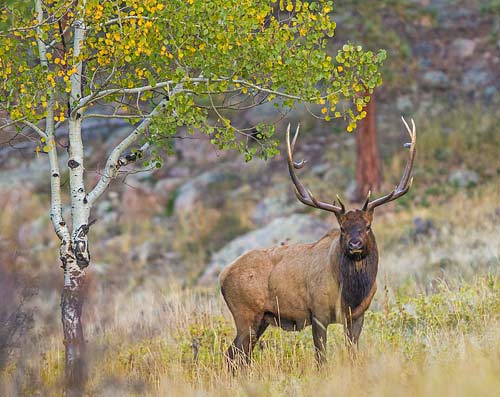
In late September elk rut is in full swing. This big bull was bugling his brains out in the early morning.
It's really loud when the bull is close.
(It makes me laugh when the spell checker wants to replace "bugling" with "bulging". Careful, he might explode.)
Red Tailed Hawk
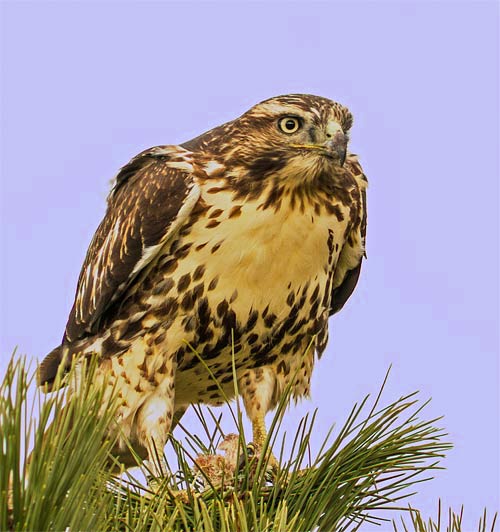
One windy afternoon I noticed this red tailed hawk standing on the top of a pine tree in my backyard.
It was hanging on tightly as the wind shook the tree.
I grabbed my camera and set up the tripod in my kitchen.
I opened the window when the hawk was looking the other direction and took its photo.
































